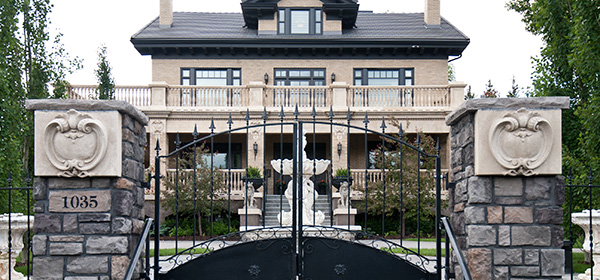
April 15, 2013 | Cody Stuart
How To: Be Home Smart
With a survey from Statistics Canada revealing Canadians are becoming increasingly aware of energy efficiency in the home, and with Earth Day growing near, CREB® Now and HomeSmarts examine some of the things you can do in your home to improve energy efficiency, save money, and lend Mother Nature a helping hand in the process.
1. Upgrade your thermostat.Changing your thermostat to a programmable one allows you to control the temperature in your home at different times of the day without you being there. Certain new programmable thermostats even allow homeowners to connect via the Internet. Research from the Canadian Centre for Housing Technology shows that winter setbacks for the houses tested would result in heating cost savings of five to fifteen per cent, with the highest savings coming with a reduction of 6°C. For the average Alberta household, that would mean saving between $5 and $20 every month.
2. Swap out your bulbs.
According to BC Hydro, lighting in your home accounts for five to 20 per cent of your total household energy use. Less than 10 per cent of the energy consumed by an incandescent bulb is used for lighting, with the remaining 90 per cent simply going to waste in the form of heat. An ENERGY STAR® compact fluorescent lamp (CFL) uses about 75 per cent less energy than a standard incandescent bulb to produce the same amount of light—and it will last up to eight times as long. That means as soon as you install a CFL, you'll be using a quarter of the energy you used to in that spot, and you'll need to buy only one CFL for every eight incandescents
3. Seal those drafts.
In many homes, 20 per cent of all heat loss is through leaks and poor ventilation. An easy way to check for leaks around your home is to wait for a cold, windy day, then light a few incense sticks. Paying special attention to outside windows and doors, electrical outlets on outside walls, doors to unheated areas and around plumbing and pipes, watch the smoke from the incense for signs of a draft. Where a draft is detected, use weatherstripping, caulking or gaskets to eliminate or lessen the leakage. For especially difficult drafts, enlist the help of a local hardware salesperson or home inspector.
4. Go low flow.
In many cases, showers can be the largest single contributor to overall hot water use in a home, accounting for 15 per cent of total household energy use. Replacing a conventional showerhead with a low-flow model is as inexpensive as $15 and is usually a quick and simple job. For the average family of three, that could save 26,600 litres of hot water and between $80 and $100 annually on your energy costs. Purchasing a low-flow aerator for your kitchen sink can save another $25 on hot water costs annually.
5. Don't standby.
The average North American home has 25 or more products that use standby power – devices that are consuming electricity 24 hours a day. Standby power can account for 10 per cent of an average household's annual electricity consumption. An easy way to turn your electronic devices all the way off, and limit standby power use, is to plug all electronics into a surge protector or power bar that can be switched off when the electronics are not being used. Certain "Smart strips" or current sensing power bars can even shut down all connected appliances or electronics once a main appliance is shut down.
Tagged: Calgary Real Estate | Calgary Real Estate News | How To | How To




